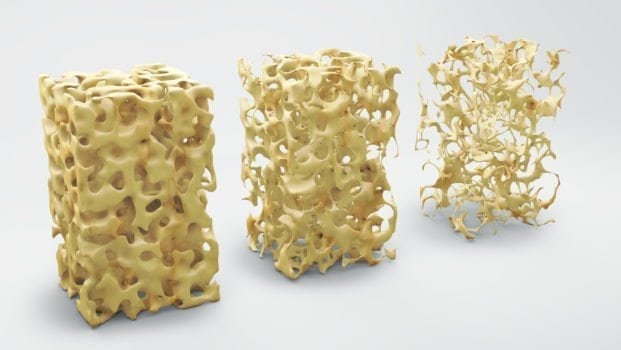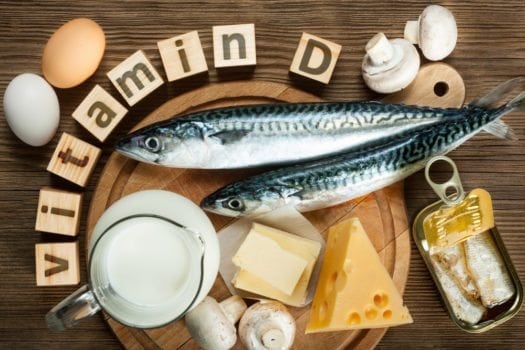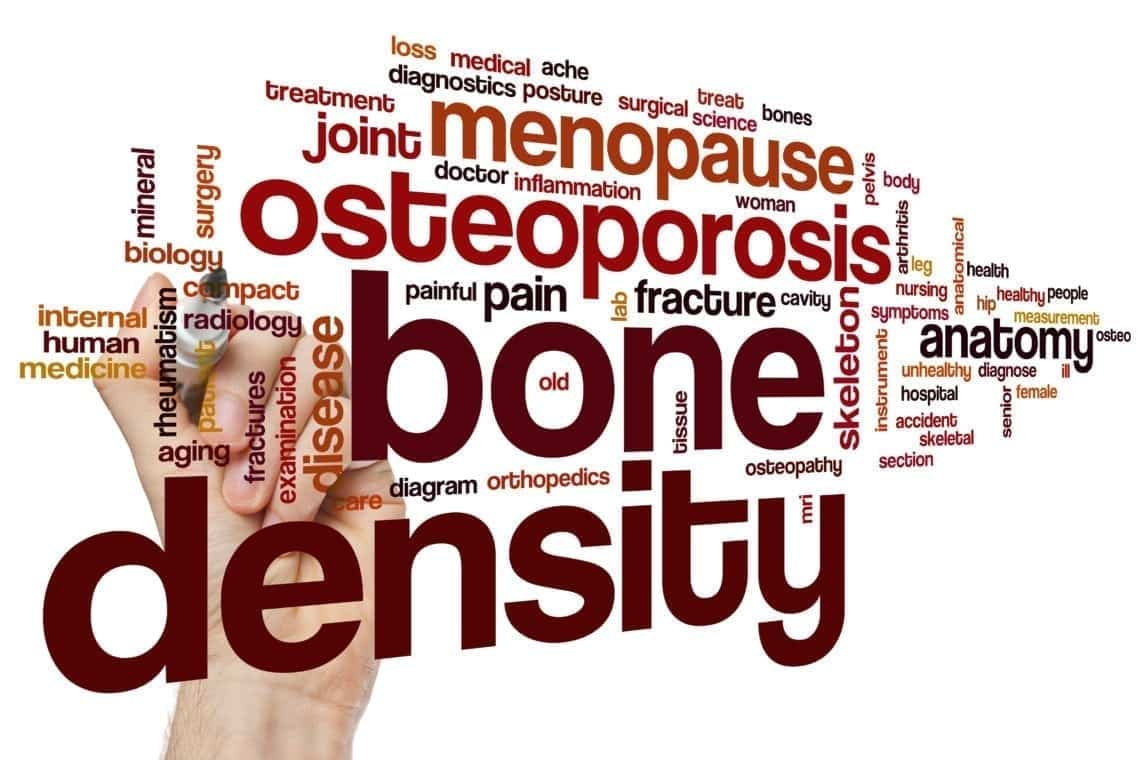Throughout your early life, your bones continue to build density. This continues until around age 35 when the process reverses and your bones instead begin to slowly deteriorate.
Dangerous Osteoporosis
After a woman goes through menopause, her bones become weaker at an even faster rate. This places post-menopausal women at a greater risk of osteoporosis, a condition where bone density is so low that you are at a high risk for fractures. Those who have osteoporosis can suffer serious fractures from minor falls that would not have hurt someone with healthy bone density. Most osteoporosis-related fractures occur in the hip, spine and wrist. Hip fractures are the most dangerous, as they call for surgery and hospitalization.
Osteoponia: The Precursor to Osteoporosis
 Even post-menopausal women who don’t have full-blown osteoporosis can develop a minor condition known as osteopenia. Osteopenia means your bone density is lower than it should be, but not low enough to constitute osteoporosis. If you have been diagnosed with osteopenia, it should be a wake-up call to take care of your bone density; otherwise, osteopenia could progress into osteoporosis. Studies show that 1 in 3 women over the age of 50 will suffer a fracture due to osteoporosis.
Even post-menopausal women who don’t have full-blown osteoporosis can develop a minor condition known as osteopenia. Osteopenia means your bone density is lower than it should be, but not low enough to constitute osteoporosis. If you have been diagnosed with osteopenia, it should be a wake-up call to take care of your bone density; otherwise, osteopenia could progress into osteoporosis. Studies show that 1 in 3 women over the age of 50 will suffer a fracture due to osteoporosis.
Menopause Increases Bone Loss in Women
There is a distinct link between menopause and osteoporosis. During menopause, estrogen levels drop dramatically, which causes cessation of the menstrual cycle as well as classic menopause symptoms like hot flashes. After menopause, estrogen levels stay very low for the rest of a woman’s life. It is these low estrogen levels that contribute to the development of osteoporosis. In fact, it is estimated that half of a woman’s total lifelong bone loss happens in the 10 years after menopause.
The longer you have low estrogen levels, the lower your bone density can drop. Therefore, some women are at a greater risk of osteoporosis than others. For example, if you experience early menopause (before age 45), or have a history of irregular menstrual periods, you have a heightened osteoporosis risk and should especially prioritize caring for your bones.
Medication to Prevent Bone Loss?
Replacing the estrogen in your body is one way to treat and prevent osteoporosis. This is done with medication known as hormone replacement therapy, which is also prescribed for moderate-to-severe menopause symptoms. Your doctor may prescribe estrogen pills to prevent osteoporosis if you went through menopause early, have naturally petite bones, have a family history of osteoporosis, or if you already have osteopenia, among other reasons.
Hormone replacement therapy is not as widely recommended as it used to be. This is because the most recent research shows that this medication comes with some serious risks, including increased risks for breast cancer, stroke and blood clots. Nowadays, it is recommended to only be used in cases where the benefits outweigh the risks. For example, if you have severe menopause side effects that nothing else relieves, or if you have actually developed osteoporosis, then the benefits of hormone replacement therapy are likely worth it.
Healthy Bones—The Natural Way
If your case is not complicated by things such as a family history of osteoporosis, then you can take less-drastic measures to prevent the condition, without the need for hormone replacement therapy. You can strengthen your bones through regular exercise, including regular weight-bearing exercise. It is recommended to do such strength training at least twice a week, perhaps for 20-30 minutes.
 Consuming enough calcium and vitamin D is also crucial. The best minimally-processed food sources of calcium include cheeses, sesame seeds and tahini, chia seeds, almonds, sardines, salmon, mackerel, tofu, beans and dark leafy greens. Quality sources of vitamin D include mushrooms, fish, shellfish and eggs.
Consuming enough calcium and vitamin D is also crucial. The best minimally-processed food sources of calcium include cheeses, sesame seeds and tahini, chia seeds, almonds, sardines, salmon, mackerel, tofu, beans and dark leafy greens. Quality sources of vitamin D include mushrooms, fish, shellfish and eggs.
Even beyond just these two nutrients, your diet matters when it comes to bone strength. Research published in early 201, in the Journal of Bone and Mineral Density found that eating an anti-inflammatory diet reduces women’s risk of bone loss and hip fracture. An anti-inflammatory diet is a moniker given to a diet rich in fruit, vegetables, fish, whole grains and nuts. This type of diet has smaller amounts of refined grains, starches, sugar, dairy and red meat than an average American diet.
Anti-inflammatory diets also tend to be high in omega-3 fatty acids. The anti-inflammatory effects of this eating pattern are due to these fatty acids, as well to numerous antioxidants and nutrients found in the fruits and vegetables. Moving toward this type of diet can reduce your osteoporosis risk, as well as benefit your health in numerous ways. Eating like this may reduce your risk of heart disease, reduce blood triglycerides, reduce blood pressure and prevent inflammatory conditions like arthritis.
Minding your exercise and nutrition habits goes a long way in protecting your bone health and preventing future problems. Your doctor may also recommend taking these steps if you have already developed osteopenia or osteoporosis. If you have osteoporosis, consult your doctor about what exercises are safe for you to do.
Recent research shows that having your bones examined by a specialist could reveal how great your risk of osteoporosis is, so if you are concerned about your risk you can find out for sure with the help of a qualified medical professional.

